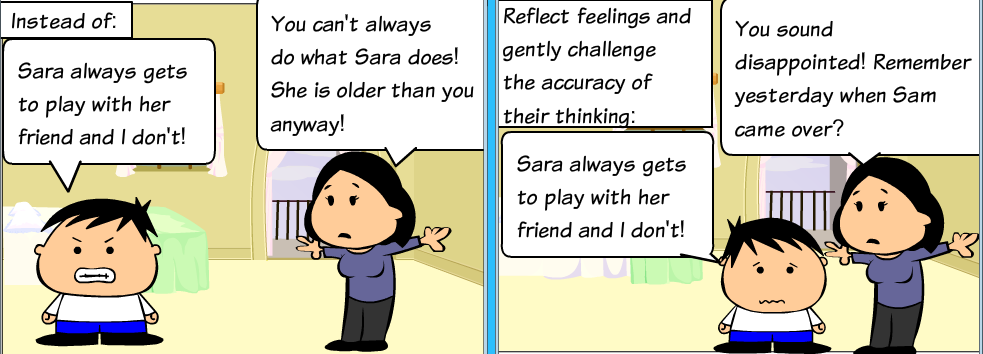
“I know it’s upsetting that we are not going to be able to go for pizza tonight. The problem is that Daddy has a meeting and I need to pick up Sara from the airport. I know that we can be flexible here.”
If my husband is around he will usually say something like, “I’m flexible, I can do the splits!”
Yes, we are a family who are prone to puns. It is my husband’s grandfather’s legacy. He was the king of word play. My husband and his siblings can come up with these types of jokes, these play on words in their sleep.
All kidding aside, flexible thinking, (as opposed to the kind you need for gymnastic feats) is an important ingredient, when we talk about teaching kids to be resilient. Analyzing problems accurately and determining the cause of the problem can help kids feel competent in solving their difficulties.
Reachinginreachingout.com notes:
“What we think about stressful events or problems affects how we feel about these events and what we do about them. Most people have developed thinking habits that become set patterns known as thinking styles or explanatory styles. Some thinking habits get in the way of people’s ability to look at problems accurately, find solutions, and bounce back.
If we use our thinking styles to analyze problems, we many not be accurate about the causes of the problems. Resilient thinking allows us to be flexible — to step back and assess problems specifically and to decide what is accurate in a particular situation. For example:
“It’s all my fault” is revised to “I’m only one member of the team.”
“This is never going to end!” becomes “Once exams are over, I’ll be able to hang out with my friends.”
“I can’t do anything right” is replaced with “I’ll get better with this once I have experience.”
Assessing situations accurately and flexibly can help us determine how long the adversity will last and how much of our lives it will affect. Realizing that a negative situation is temporary and affects only a specific part of our lives helps us feel less overwhelmed. When a negative situation is actually permanent and affects many aspects of our lives, resilient thinking can help us put solutions into place to ease the stress.
To help kids develop the ability to analyze problems, they first need to learn how to identify the problem and we can move them to focus on solutions. Identifying the problems can sound something like this:
“Oh no! Everyone wants to sit next to Daddy at the dinner table. There is only one place next to him. What can we do to solve this problem?”
We can also challenge children’s initial assessment of the situation. This helps them become more flexible in their thinking.
When kids say: “I never get to play with the blocks!” or “She always gets the marker color that she wants!,” we can reflect their feelings and gently remind them of the accuracy of their thinking:
“You sound upset. Remember yesterday you built a huge tower with the blocks that you knocked down!”
“You wish that you could have had that blue marker first. Remember last week when you had the markers all to yourself and you got to choose whatever color you wanted?”
We also want to help our kids change their negative thinking patterns:
When they express discouragement, “I’ll never be able to get a goal in soccer!”,
we can remind them of their past achievements, “You sound upset. Remember when you could not ride your bike? But you practiced and now you can do it. Soccer can be just like that.”
Want to learn more about Teaching Kids Resilience?
You can get our audio classes here:
Raising Resilient, Responsible and Independent Children

